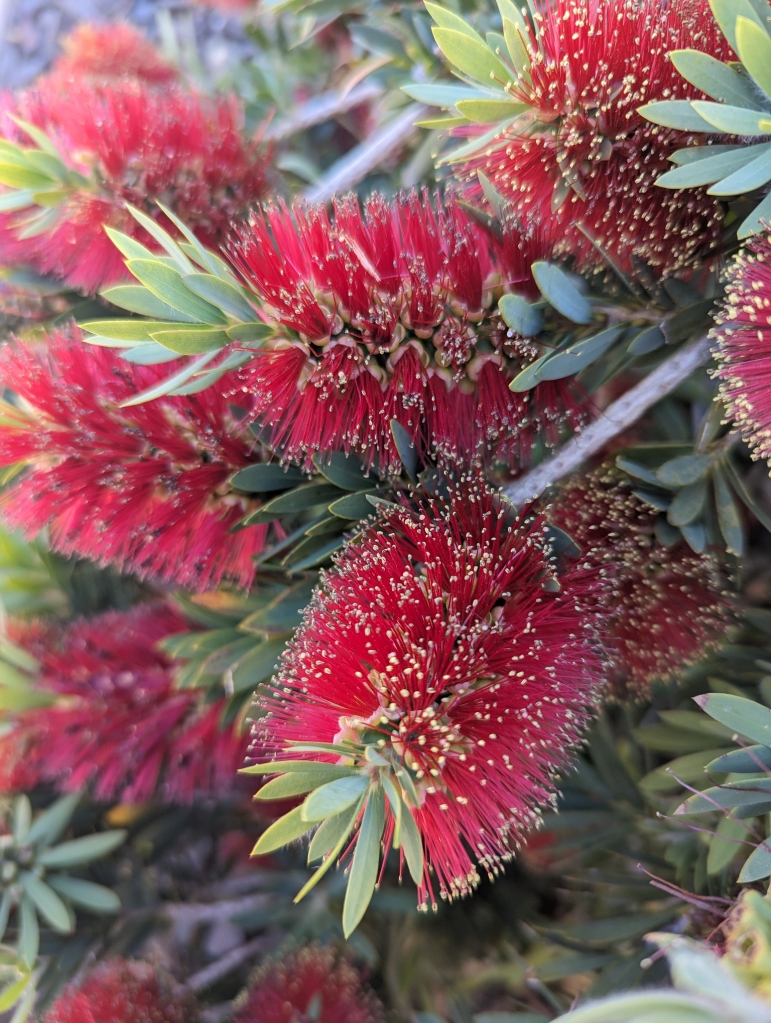
Old fashioned lemon bottlebrush would be so practical, if only it did not get so bulky. It is impressively resilient. Although appreciative of occasional watering, it needs none once established. Phases of red bloom continue through warm spring and summer weather. A few sporadic blooms may continue throughout winter. Hummingbirds are very fond of it.
‘Little John’ bottlebrush, Callistemon viminalis ‘Little John’, is all that and less. It remains much more proportionate to compact home gardens. Growth is relatively slow and tame. Mature specimens may grow no bigger than three feet tall and five feet wide. They prefer to assume naturally mounding form without shearing. Any pruning should be quite minor.
More than compact form distinguishes ‘Little John’ bottlebrush from lemon bottlebrush. Its evergreen leaves are relatively small and slightly grayish. Their foliar texture is relatively tidy. Its lemony foliar aroma is relatively subdued and only evident if foliage is disturbed. The fuzzily staminate floral trusses are relatively small with relatively mellowed red color.
What a pretty plant! And a perfect name! I have seen something similar here sold as a summer container plant. If Little John gets to three feet, how big does Lemon Bottlebrush get?
LikeLiked by 1 person
Lemon bottlebrush can get taller than a two story building. It takes quite a bit of effort to prune it up, but it grows as small street trees in the View Park district of Los Angeles. It is one of those few species that I am determined to grow in my own garden just so that I can learn to appreciate it. Only one inhabits the landscapes at work, but it is not an exemplary specimen within partial shade.
LikeLike
Wow, that is tall! They must look quite impressive.
LikeLiked by 1 person
Well, that is debatable. They are somewhat shaggy looking. Most do not get pruned properly. I noticed that those that grew as street trees in Los Angeles were pruned up for clearance quite nicely, but I can also see that it is a lot of work. Their olive drab foliar color is not so great, so they are best while covered with bloom. Unfortunately, so-called ‘gardeners’ typically shear the bloom off before it gets to bloom. Bottlebrush really should be pruned severely, then allowed to grow freely and bloom before getting pruned severely again, but definitely not shorn. It grows in freeway medians, which sort of cheapens it for home gardens. However though, I still sort of want to like it, and am determined to grow it well. Decades ago, people cut blooming stems like any other cut flower. That would seem weird now, but I would do it.
LikeLiked by 1 person
I wish I could grow this little beauty in my zone, 6.
LikeLiked by 1 person
There are plenty of prettier flowers to grow there. It is more popular for its resiliency than for its pretty flowers. The flowers, although pretty, are more of a colorful bonus.
LikeLiked by 1 person